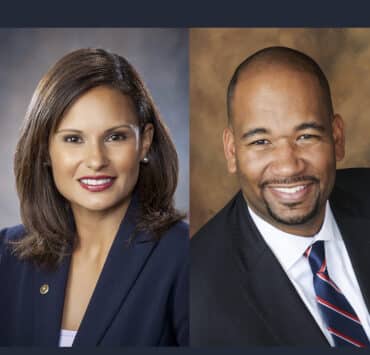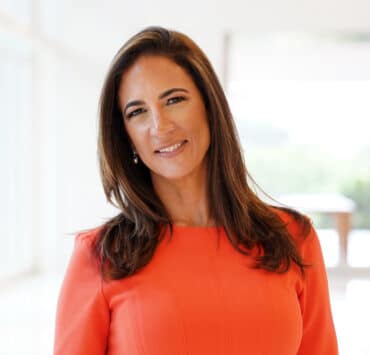|
Getting your Trinity Audio player ready...
|
It’s time for America to see Asian-Latinos.
May is Asian/Pacific American Heritage Month, which showcases the contributions of Asians and Pacific Islanders in the United States. The occasion takes on extra significance these days, when demagogues make the headlines for stoking anti-Asian violence. Perhaps the worst instance was the tragic killing of six Asian women on March 16 at massage parlors near Atlanta.
But even as Asian Americans—and Asian-Latinos—are attacked and discriminated against, they take on an ever-more significant role in our nation.
Based on recent population data, I think it very likely that the 2020 Census will show that Asians and Pacific Islanders now account for 8 percent of the US population. In California, the nation’s most populous state—where approximately 40 percent of the population is Latino—I think we will see the number of Asians climb to 18 percent. Together, the two groups account for more than 50 percent of the state’s population.
“I think the narrative of Asians as the other, the foreigner, is so cemented in people’s psyche by now that we forget just how long Asians have been in his country.”
Jose Antonio Vargas
For those who belong to both groups, what must the world look like?
I do know that the first Asian-Latinos were Filipinos. The Spanish established their first permanent settlement in the Philippines in 1565, beginning a colonial period that lasted through the end of the Philippine Revolution in 1898. It was also during the sixteenth century that Filipinos began migrating to Latin America, primarily to Cuba and Mexico but also to Colombia and Peru. They came as sailors and soldiers—but they also came as prisoners and slaves.
To navigate the full complexities of this topic, however, I knew I would need a guide. So I reached out to Jose Antonio Vargas, who—like me—lives in a country that sees in black and white but is home to many individuals who don’t neatly check any one box. My friend affectionately calls me kuya, which means “older brother” in Tagalog. He’s one of the most prominent undocumented immigrants in the nation. The Filipino American is also an author, a Pulitzer Prize-winning journalist, a filmmaker, the cofounder of the nonprofit Define American, and the inspiration for an elementary school in his hometown of Mountain View, California, which was named after him in August 2019.
Vargas’s next book, which will be released in 2023, is about what Latinos and Asians in the United States make of race. This country can’t stop talking about the topic—yet often only does so in black-and-white terms, not recognizing that America has long moved past the time when people were “just” one thing or another.
As an Asian-Latino, Vargas “gets” Latinos better than many Latinos I know.
And I “get” Vargas. My amigo is part explorer, part scientist. He loves to discover new things, and then take them apart to see how they work.
I asked the explorer/scientist what he thinks America looks like at the moment, and where he fits in.
“Well, you have Black people who came from enslaved families that didn’t want to be here,” he said. “You have white people that came here because they were trying to basically escape Europe, and here, they became white. You have Latinos who have this thing called proximity and geography. Then you have this whole other people—Asians—from a completely different part of the world.”
“In many ways, with Asians and Latinos—our existence in this country and the way we’ve been defined—it’s the same way that the Black and white binary has been defined.”
Jose Antonio Vargas
I was curious: are Asians on the “inside” of America, or on the “outside”?
“I think the narrative of Asians as the other, the foreigner, is so cemented in people’s psyche by now that we forget just how long Asians have been in his country,” he said. “You have cities like Stockton, which in many ways was at the very heart of anti-Filipino sentiment in California. They had signs in restaurants and shops in the ’30s that said, ‘Positively no Filipinos allowed.’”
I asked Vargas whether he thought there was any natural affinity between the bloodlines in his veins—Latino and Asian.
“Outside of noodles and rice, what do all these Asian cultures have in common?” he asked. “We have very different histories. The struggle between the Japanese and the Filipinos, and the Koreans and the Japanese, and the Chinese and the Filipinos . . . entire distinct histories are now lumped into this thing called ‘Asian,’ right? [And it’s] the same way with Hispanics. When I went to Miami, and I realized, ‘Oh, shit. There’s tension between Venezuelans and Colombians? What is that about?’”
As for where Vargas fits in, that’s hard to say.
“In many ways, with Asians and Latinos—our existence in this country and the way we’ve been defined—it’s the same way that the Black and white binary has been defined. Asian people in America is a completely new creation, but about 60 percent of the world’s population comes from Asia. We’re actually the world’s majority. And then we come to this country, and we become the marginalized within the marginalized.”
There’s a story I recognize. The Germans. The Irish. The Italians. The Greeks. The Jews. And now, the Latinos and the Asians. The actors change, but the drama stays the same.
The story of the marginalized is the story of America. But get ready. Soon, the America’s discourse about race and identity will become far richer and more complex than it has been in the past. And it’s a good bet that when that conversation comes, Asian-Latinos will be at the center.
Ruben Navarrette—a contributing writer at Hispanic Executive—is a syndicated columnist with The Washington Post Writers Group, a columnist for the Daily Beast, author of A Darker Shade of Crimson: Odyssey of a Harvard Chicano, and founder/CEO of The Navarrette Sonic Podcast Network (NPSN).


